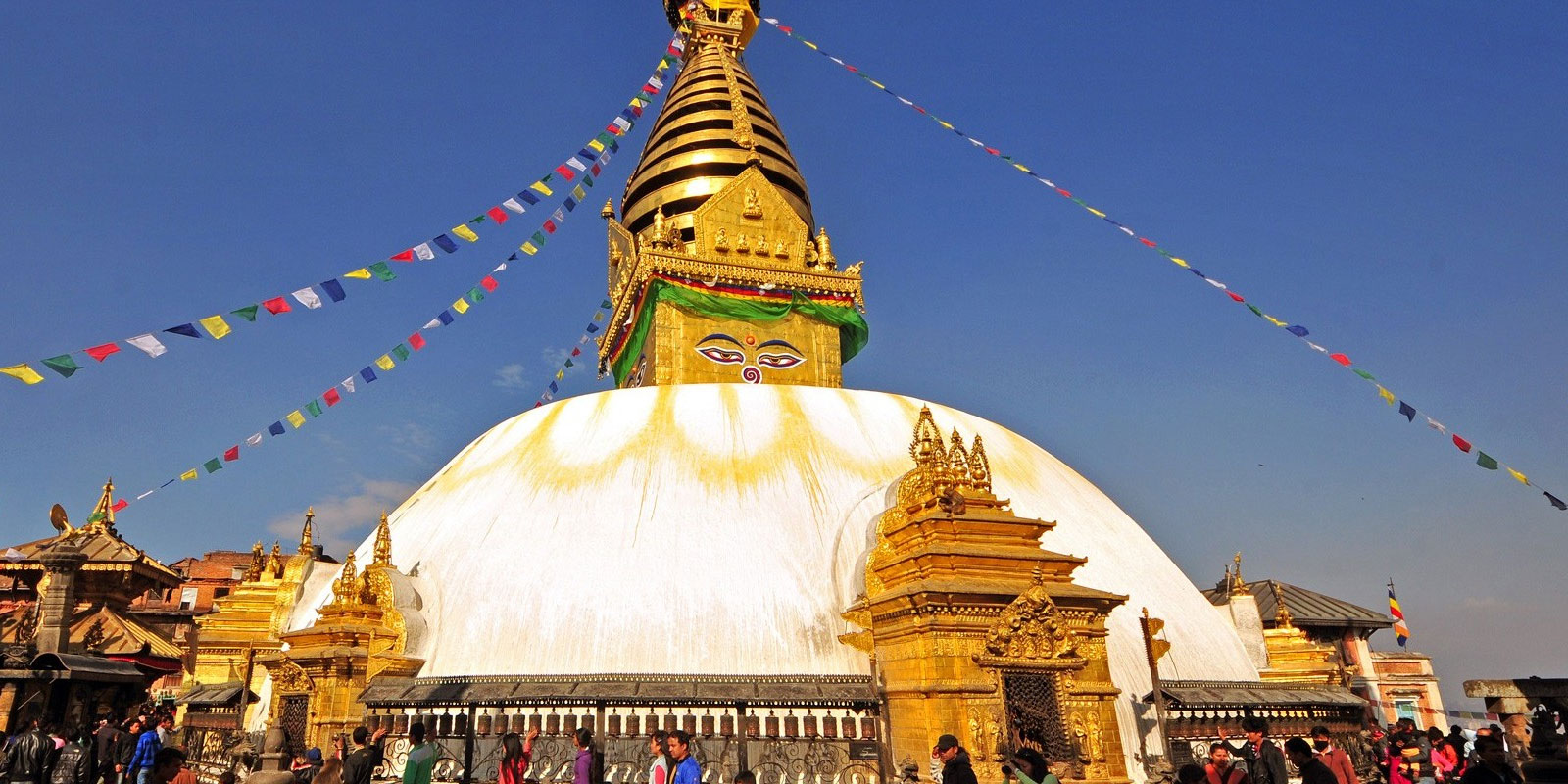
Swayambhunath
- Kathmandu , Nepal
Swoyambhunath stupa commonly known as monkey temple is one of the ancient religious architecture located at 3km west hillock of Kathmandu valley. Swoyambhu is a Sanskrit word that means "self-existing", that is created by its own recognition. The temple is sacred as a Buddhist pilgrimage sites.
It is said to be evolved spontaneously when the valley was created out of a primordial lake more than 2000 years ago. This stupa is the oldest of its kind in Nepal and contains numerous shrines and monasteries on its premises.
The main stupa is lofty white washed dome with glittering golden spire are visible form many miles and from all sides of the valley. The temple has two access points; a long staircase with 365 steps, leading directly to the main sanctum of the temple, and a pitch road round of the hill directly leaded towards the southwest entrance. At the initial point of the sanctum the huge gold plated vajra "thunderbolt" is placed with two lions guarding the entrance from which a series of clockwise circumnavigation of the stupa begins. On the main stupa, the four sides are painted with the pair of big eyes which has been symbolized as god's all seeing perspectives. Although Ears has not been shown because it has been said the Buddha is not interested in hearing prayers in praise of him. The base of the stupa consists of prayer wheels with carved sacred mantras’’. The area is surrounded with chaityas, vihars, painted images of deities and other religious objects. The site was severely shaken by the earthquake of 2015, but the main stupa sustained only superficial damage.




